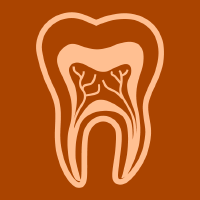Topic Editors

Advances in Dental Health
Topic Information
Dear Colleagues,
It is pleasure to invite you to submit manuscripts to one of the most topics in dentistry: Advances in Dental Health. The advances in dental Health is by the advent of digital technology and artificial intelligent. The dentistry in recent years had a big change because of this. This Topic is aimed at dealing with topics relating to diagnosis and treatment and new technologies.
We look forward to receiving your submissions
Dr. Sabina Saccomanno
Dr. Gianni Gallusi
Topic Editors
Keywords
- orthodontic
- pediatric care
- artificial intelligence
- digital dentistry
- oral disease
- sleep disorders
- dysfunction temporomandibular
- aligners
- periodontology
- dental materials
- oral surgery
- posture
Participating Journals
| Journal Name | Impact Factor | CiteScore | Launched Year | First Decision (median) | APC | |
|---|---|---|---|---|---|---|

Dentistry Journal
|
2.6 | 4.0 | 2013 | 27.8 Days | CHF 2000 | Submit |

Healthcare
|
2.8 | 2.7 | 2013 | 19.5 Days | CHF 2700 | Submit |

Journal of Clinical Medicine
|
3.9 | 5.4 | 2012 | 17.9 Days | CHF 2600 | Submit |

Journal of Personalized Medicine
|
3.4 | 2.6 | 2011 | 17.8 Days | CHF 2600 | Submit |

Oral
|
- | - | 2021 | 27.7 Days | CHF 1000 | Submit |

MDPI Topics is cooperating with Preprints.org and has built a direct connection between MDPI journals and Preprints.org. Authors are encouraged to enjoy the benefits by posting a preprint at Preprints.org prior to publication:
- Immediately share your ideas ahead of publication and establish your research priority;
- Protect your idea from being stolen with this time-stamped preprint article;
- Enhance the exposure and impact of your research;
- Receive feedback from your peers in advance;
- Have it indexed in Web of Science (Preprint Citation Index), Google Scholar, Crossref, SHARE, PrePubMed, Scilit and Europe PMC.


